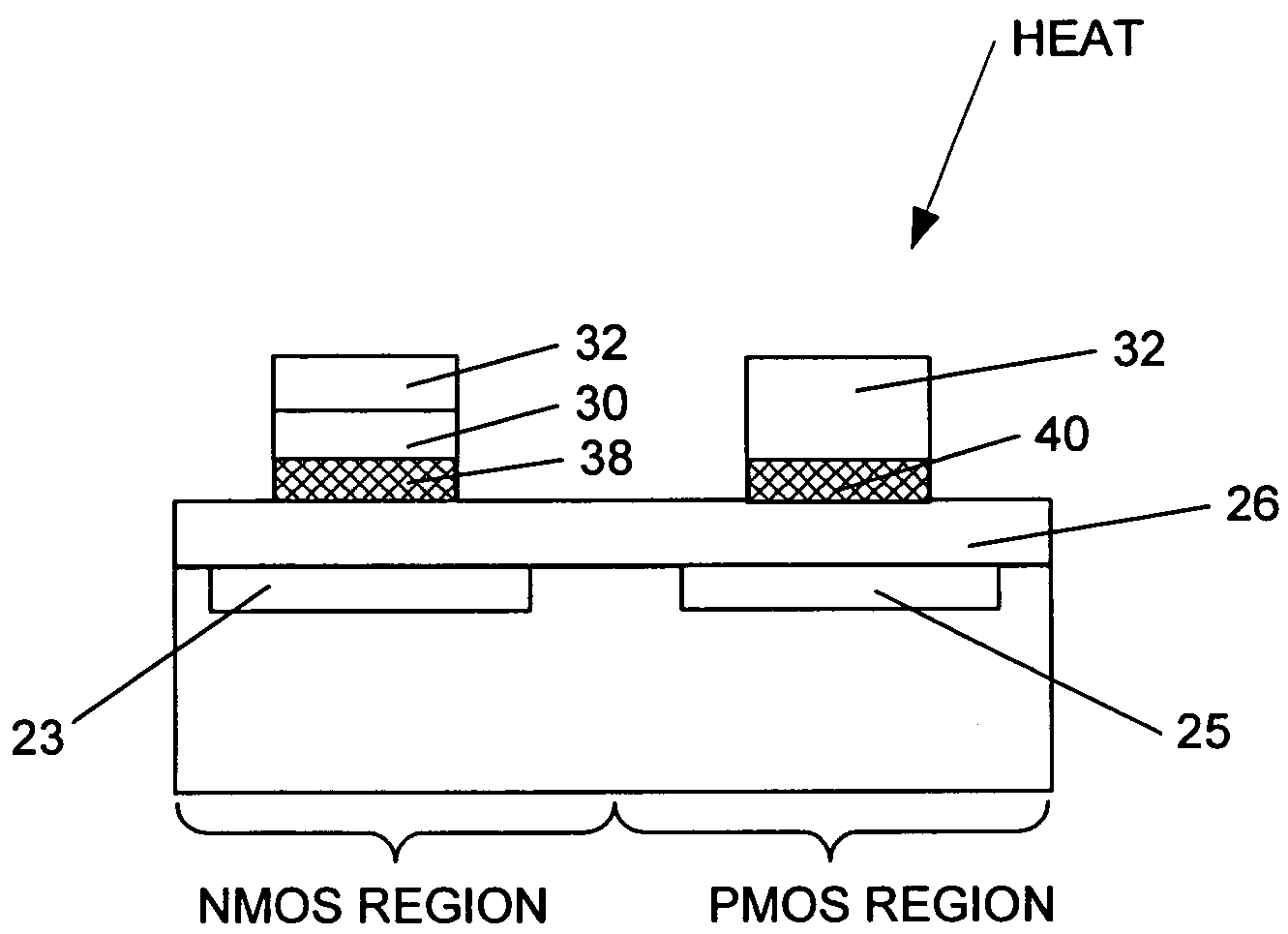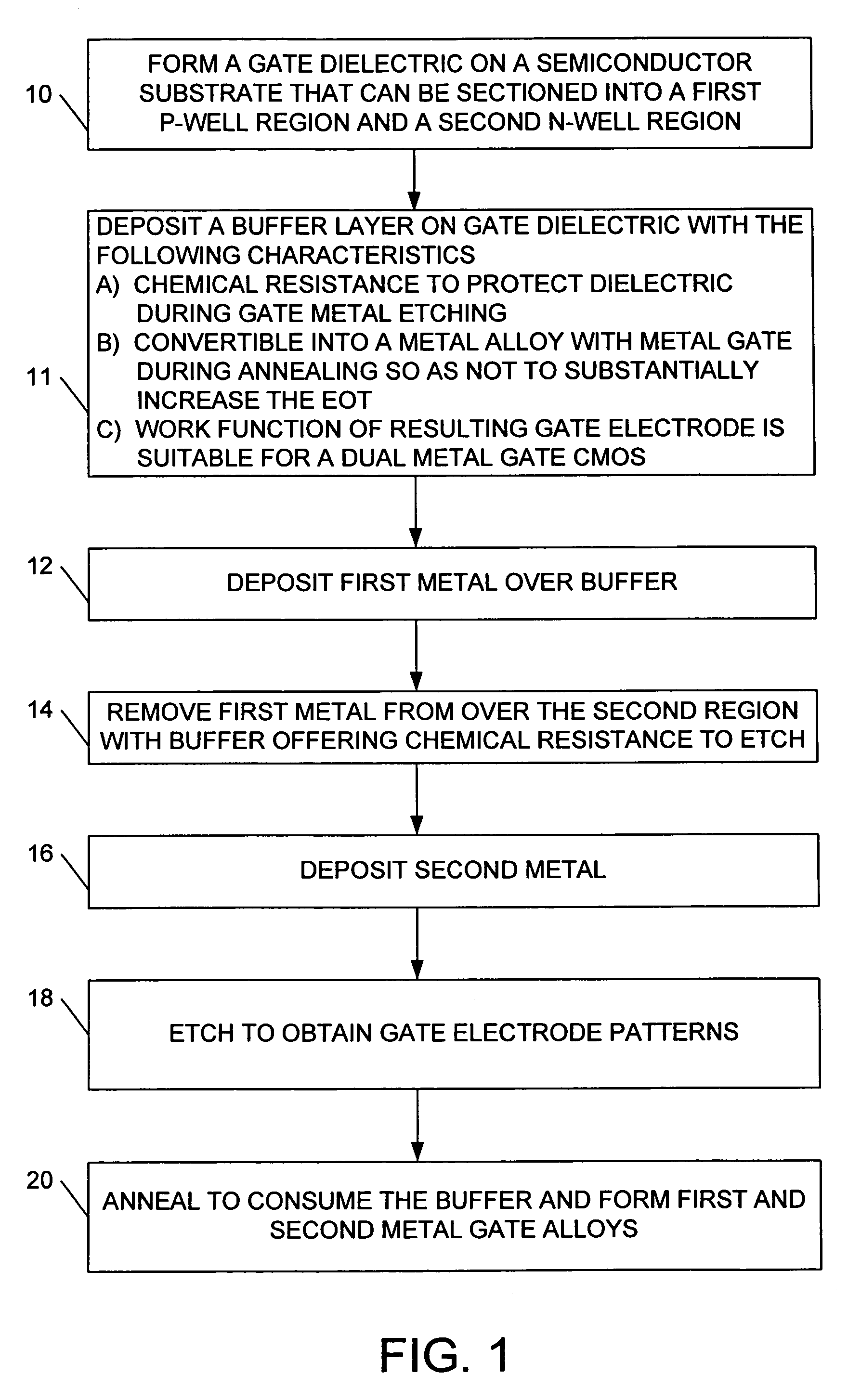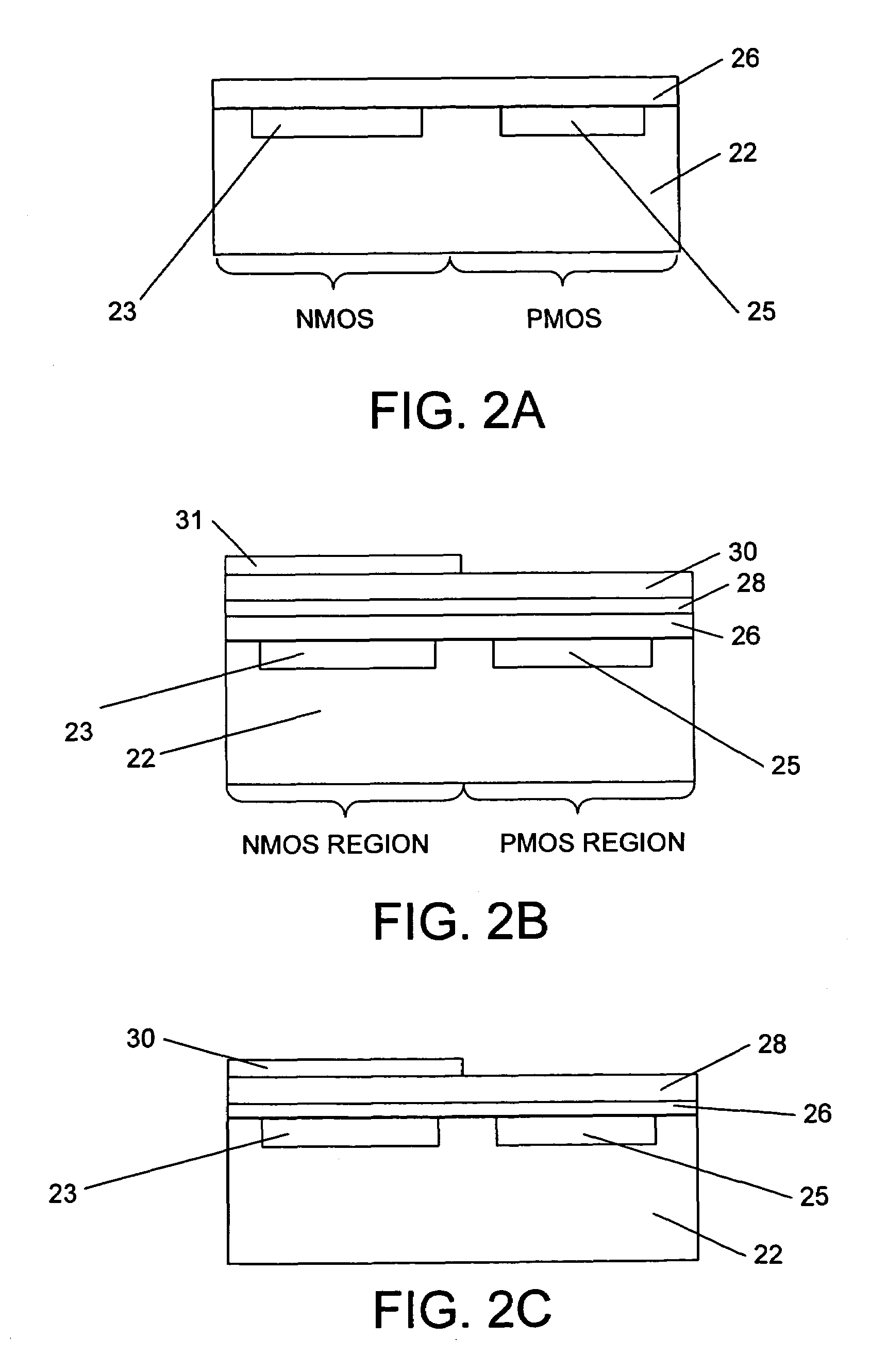Method of fabricating a CMOS device with dual metal gate electrodes
a technology of gate oxide layer and cmos device, which is applied in the direction of basic electric elements, semiconductor devices, electrical equipment, etc., can solve the problems of gate oxide layer thickness increase, cmos device scale to smaller dimensions,
- Summary
- Abstract
- Description
- Claims
- Application Information
AI Technical Summary
Problems solved by technology
Method used
Image
Examples
Embodiment Construction
[0019]The method of the present invention is illustrated in the flow chart of FIG. 1. The process / method fabricates dual metal gate electrodes of a CMOS device. This method allows each metal gate electrode to have its optimal work function, namely 4.4 v for NMOS and 4.9 v for PMOS. The process begins (block 10) with forming a gate dielectric 26 on a substrate 22 which has a p-well region and n-well region for use in the formation of NMOSFET and PMOSFET devices in a CMOS. In a preferred embodiment the gate dielectric is thermally grown SiO2. A buffer layer 28 is then deposited (block 11) on the gate dielectric 26 of the CMOS p and n-well structures. Methods for depositing the buffer layer include physical vapor deposition (PVD), chemical vapor deposition (CVD), atomic layer deposition (ALD), and sputtering. The buffer layer material is selected to meet three criteria: (a) It must be chemically resistant to protect the underlying gate dielectric from exposure to an etchant used during...
PUM
| Property | Measurement | Unit |
|---|---|---|
| thickness | aaaaa | aaaaa |
| temperature | aaaaa | aaaaa |
| thickness | aaaaa | aaaaa |
Abstract
Description
Claims
Application Information
 Login to View More
Login to View More - R&D
- Intellectual Property
- Life Sciences
- Materials
- Tech Scout
- Unparalleled Data Quality
- Higher Quality Content
- 60% Fewer Hallucinations
Browse by: Latest US Patents, China's latest patents, Technical Efficacy Thesaurus, Application Domain, Technology Topic, Popular Technical Reports.
© 2025 PatSnap. All rights reserved.Legal|Privacy policy|Modern Slavery Act Transparency Statement|Sitemap|About US| Contact US: help@patsnap.com



